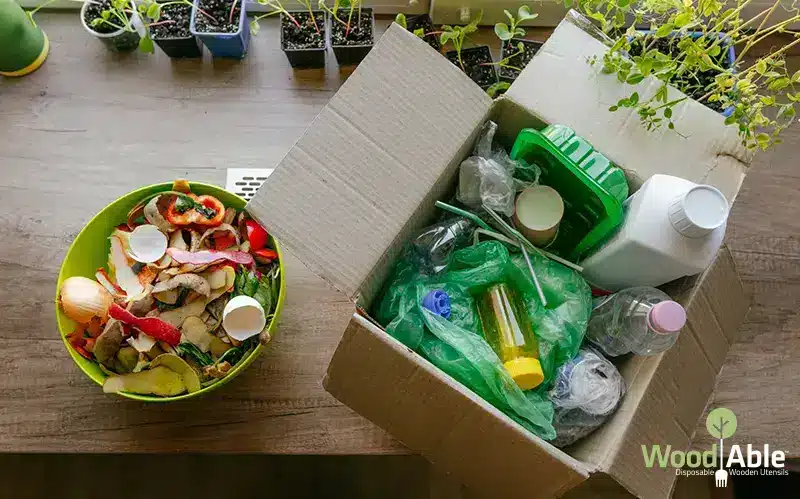WoodAble Blog
Certification Takes the Mystery out of Composting
You may know that an organic banana peel can be composted at home, but what about PHA bioplastics?
Polyhydroxyalcanoates (PHA) are plastics that are made from canola oil instead of chemical polymers. It will be in use more often as major companies make a concerted effort to go green.
But ultimately it’s up to you to know what items are degradable and how to handle them appropriately to help the planet. To that end, the American Society for Testing and Materials (ASTM) tests items to ensure that they meet the standards for various kinds of composting. This leads to certification and a nice logo on the product that will tell you what to do once you’re done with it.
ASTM’s standards for industrial chemical and physical breakdown (disintegration) is that the item must break down within 180 days to be considered biodegradable.
Once the product passes ASTM testing, it goes to a third party, usually the Biodegradable Products Institute (BPI) in the US, although there are others in the UK or Europe, who can officially certify the product as biodegradable. You may see logos from ASTM, BPI, EN or TUV regarding a product’s biodegradability.
There is a difference between ‘biodegradable’ and ‘home compostable.’ Biodegradable only means that the item breaks down into innocuous substances. Home compostable means that the broken down particles specifically become nutrients for the soil. So far, the only home compostable that isn’t food is PHA bioplastics.
ASTM also tests which plastics can degrade anaerobically (without air) to approve them for landfills.
Marine degradation (breaking down under water) is tested by ASTM for breakdown by three months, and full biodegradation by six months. ISO16221 is the standard mark you will see for international waters. Marine equipment such as fishing gear is tested to be certified degradable in the US, to help stop polluting waters if tackle falls overboard.

